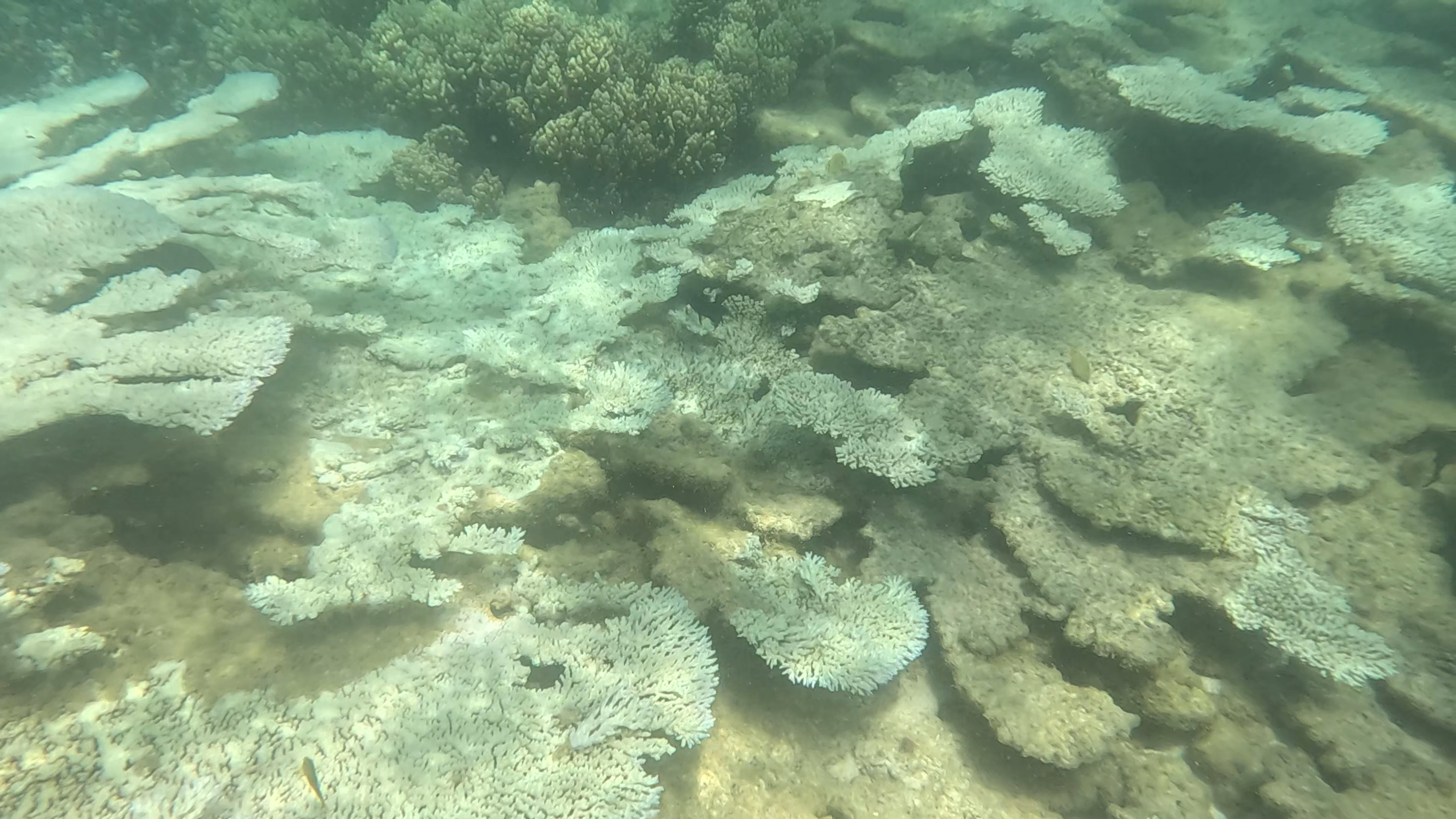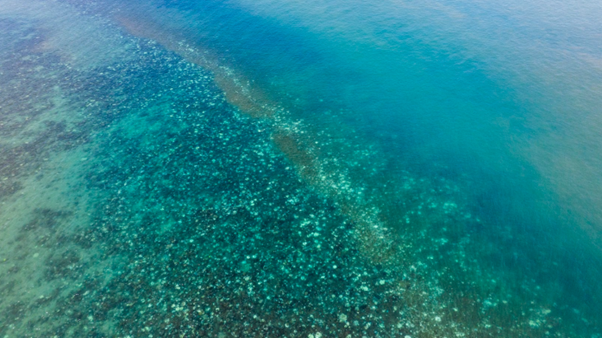Divers at Ningaloo Reef in Western Australia have recorded footage that looks more like the surface of the Moon than a healthy coral reef. The videos and stills have been released by the Australian Marine Conservation Society (AMCS), who have called on the state and federal government to reveal how they plan to protect one of the planet’s most ecologically significant reefs. However, for most of the reef it may already be too late, with the potential for most of the corals to be dead within weeks.
ADVERTISEMENT GO AD FREE
Coral reefs rely on a symbiosis between the coral itself and dinoflagellates, which harness sunlight to produce sugars, which they provide to the coral in return for protection and a place to grow. When corals become stressed past a certain point, they expel the dinoflagellates, losing their color in the process.
Bleached corals may look like they are dead, but can initially recover. However, if the conditions causing the stress last for more than a few weeks, the corals die. A good year for settlement of coral larvae can see fast-growing species rebound within months, but for the slow-growing species that play a crucial part in the health of the reef ecosystem, major bleaching events carry long-term consequences.
Most of the world’s coral reefs are suffering stress from many directions, including pollution, over-fishing and nutrient run-off from nearby farms. Ningaloo reef, in a sparsely populated area of northern Western Australia, has escaped most of those threats, but corals have a narrow range of temperatures in which they can live, and climate change is reaching into every corner of the Earth.
There has been plenty of warning that Ningaloo could be in trouble this year. Besides the record-breaking temperatures in 2024, northwestern Western Australia experienced an area of extremely hot water that created an enormous fish kill in the Pilbara, north of Ningaloo.
Then the Leeuwin Current brought it to Ningaloo, a place tourism authorities call “a sparkling gem in Western Australia’s crown.”
ADVERTISEMENT GO AD FREE
Ningaloo is famous as one of the few places where whale sharks come close to shore, allowing people to swim with the gentle giants. It’s also visited by humpback whales, turtles, and manta rays, creating a large tourist economy at Exmouth, the nearest town. It’s a World Heritage site, next up the coast from Shark Bay, home to the world’s most technologically advanced dolphins and stromatolites that offer insight into the origins of life.

The bleaching is widespread at Turquoise Bay, a popular part of the reef.
Image credit: Sara Morgillo/AMCS
“Bleaching at Ningaloo is not normal. It demands urgent action from government, not business as usual. Large areas of coral could die in the weeks ahead. This is a red-alert moment for Ningaloo,” said the AMCS’s WA Director Paul Gamblin in a statement. “This marine heatwave is like an underwater bushfire raging along Western Australia’s coast killing tens of thousands of fish that washed up on Pilbara beaches and now it’s cooking Ningaloo.”
The bleaching comes at a politically sensitive time. Early voting opens Monday for Western Australia’s March 8 state election. The Australian federal election will be held by May. So far, however, that hasn’t prompted a reaction from the current or potential governments.
“We called for the WA government to address this destructive marine heatwave weeks ago after the fish kill, and there has been silence at the ministerial level. Surely now that there is such widespread bleaching at Ningaloo, someone in government will step up,” Gamblin added. “Coastal communities and their businesses, including the fishing industry and Ningaloo’s world-renowned tourism industry, rely on a healthy marine environment, and climate change poses an existential threat to them.”

Anyone thinking the images of bleached corals have been cherry-picked from an otherwise healthy reef should consider this shot from the air.
Image credit: Blue Media Exmouth
Gamblin called for a public assessment of Western Australia’s other major coral reefs, which are much further offshore, making it harder for amateur divers to collect the information for the public.
Western Australia’s vast methane resources are among the world’s largest sources of liquified natural gas, which a recent study found to be more carbon intensive than coal. Nevertheless, two months ago the largest producer was granted a 50-year extension to their exports. Even if the reef stages a miraculous recovery for this year, continued fossil fuel production on such a scale is incompatible with Ningaloo’s survival.
Source Link: New Videos Show Massive Bleaching On One Of World's Most Pristine Coral Reefs